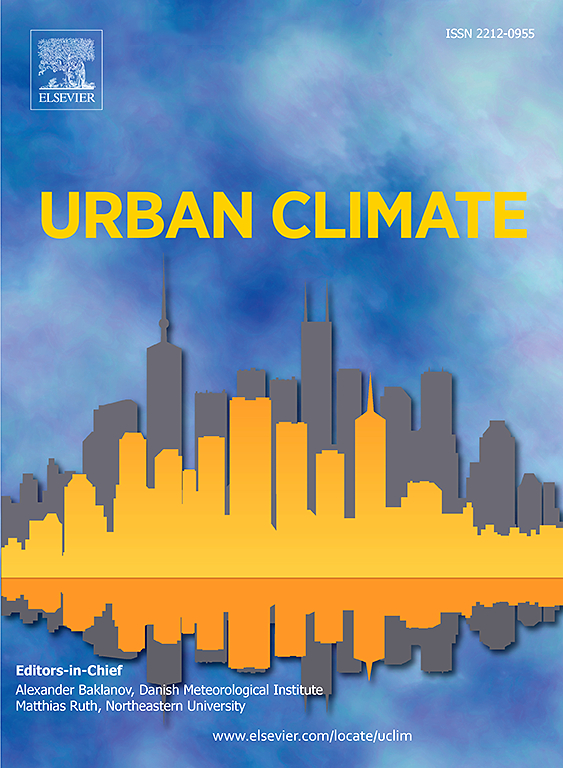Spatial heterogeneity of meteorological elements and PM2.5: Joint environmental-meteorological effects on PM2.5 in a Cold City
IF 6
2区 工程技术
Q1 ENVIRONMENTAL SCIENCES
引用次数: 0
Abstract
To quantify the differences in winter thermal environment and air quality and to clarify the main factors influencing PM2.5 concentrations in cold regions, providing references for regional heating supply design and urban planning. In this study, pedestrian-level thermal environmental parameters and PM2.5 concentration were measured and compared across different urban functional zones (UFZs). Additionally, multiple linear regression (MLR), principal component analysis (PCA), and principal component regression (PCR) were employed to analyze the main controlling factors of PM2.5 and air temperature. The findings reveal that regional microclimate temperatures differ significantly, with variations of 2.68–4.31 °C compared to typical MET data. Notably, the Sky View Factor (SVF) emerged as the dominant influence on temperature variations, while PM2.5 concentrations were primarily driven by a combination of ENV (BD, SVF, GnPR) and MET factors (Ta, RH, TSr). The PCR model demonstrated superior predictive accuracy for PM2.5 concentrations (Adjusted R-squared = 0.78) compared to the MLR model (Adjusted R-squared = 0.63). This study not only deepens the understanding of ENV-MET interactions in cold regions, but also provides important recommendations for optimizing urban planning and heating strategies to improve air quality and thermal comfort.
气象要素与 PM2.5 的空间异质性:环境气象对寒冷城市 PM2.5 的联合影响
量化寒冷地区冬季热环境和空气质量的差异,明确影响 PM2.5 浓度的主要因素,为区域供热设计和城市规划提供参考。本研究测量并比较了不同城市功能区(UFZ)的行人热环境参数和 PM2.5 浓度。此外,还采用多元线性回归(MLR)、主成分分析(PCA)和主成分回归(PCR)分析了 PM2.5 和气温的主要控制因素。研究结果表明,区域小气候温度差异显著,与典型的 MET 数据相比,差异为 2.68-4.31 °C。值得注意的是,天空景象因子(SVF)是影响气温变化的主要因素,而 PM2.5 浓度则主要由环境(BD、SVF、GnPR)和 MET 因子(Ta、RH、TSr)共同驱动。与 MLR 模型(调整 R 方 = 0.63)相比,PCR 模型对 PM2.5 浓度的预测准确性更高(调整 R 方 = 0.78)。这项研究不仅加深了人们对寒冷地区环境与气象相互作用的理解,还为优化城市规划和供热策略以改善空气质量和热舒适度提供了重要建议。
本文章由计算机程序翻译,如有差异,请以英文原文为准。
求助全文
约1分钟内获得全文
求助全文
来源期刊

Urban Climate
Social Sciences-Urban Studies
CiteScore
9.70
自引率
9.40%
发文量
286
期刊介绍:
Urban Climate serves the scientific and decision making communities with the publication of research on theory, science and applications relevant to understanding urban climatic conditions and change in relation to their geography and to demographic, socioeconomic, institutional, technological and environmental dynamics and global change. Targeted towards both disciplinary and interdisciplinary audiences, this journal publishes original research papers, comprehensive review articles, book reviews, and short communications on topics including, but not limited to, the following:
Urban meteorology and climate[...]
Urban environmental pollution[...]
Adaptation to global change[...]
Urban economic and social issues[...]
Research Approaches[...]
 求助内容:
求助内容: 应助结果提醒方式:
应助结果提醒方式:


